After a brief introduction to Vipassana, in this article I will get through meditation technique, main principles of Buddhism, personal experiences of 10-day silent meditation retreat that I took and several other stories of symbolic dreams including Will Smith, workings of subconscious, a natural psychedelic trip, how the idea of threesome helped to understand the practice and finally answer whether Vipassana is a sect, which a lot of unknowing people call on first.
What is Vipassana?
Vipassana is the universal meditation technique rediscovered by Gotama the Buddha in ancient India more than 2500 years ago. The word “Vipassana” itself means seeing things as they really are – objectively. Most religions or any person that has spent some time contemplating the meaning of life has come to realize Life is Suffering.
Vipassana meditation technique aims to eradicate suffering from practitioner’s life, purify the mind, bring mental and emotional equanimity and in general promote lifestyle that is meaningful to society.
Three pillars of Vipassana
The most popular and introductory course of Vipassana comes with 10-day commitment not to leave and five precepts of Vipassana called Sīla (moral conduct) which is one of three main pillars of Vipassana:
- to abstain from killing any being;
- to abstain from stealing;
- to abstain from all sexual activity;
- to abstain from telling lies;
- to abstain from all intoxicants.
Samādhi – is the second pillar – which is a concentration of the mind and lastly: Paññā — the wisdom of insight.
Noble Silence and other Prohibitions at the Course
During the entire 10-day course it is prohibited to communicate with peer students in any way.
Students may, however, speak with the teacher whenever necessary and they may approach the management with any problems related to food, accommodation, health, etc. But even these contacts should be kept to a minimum. Students should cultivate the feeling that they are working in isolation.
Other prohibitions at Vipassana:
- no phones, music players, etc;
- no reading or writing;
- you should avoid physical contact throughout the course;
- men and women are separated;
- you should not mix any other techniques or rituals, carry any talismans, minerals, etc;
- you should keep physical activity and minimum (walking, stretching);
- keep conservative clothing.
These may seem atrocious, but main principle is:
Take great care that your actions do not disturb anyone. Take no notice of distractions caused by others.
In short, you are a monk for those 10 days. You and your mind – a perfect setting to gain control over yourself. It may seem alien at first, especially if a reader is not familiar with meditation in the first place, but actually these rules make perfect sense and are there for your own benefit.
My “How” and “Why” to enter the Course
I am an obsessive over-thinker which is usually very tiring and even counterproductive, if uncontrolled. So over the years I have been testing and experimenting with all sorts of ways to silence the mind and gain harmony within. Naturally meditation came my way, I observed that this is a meta activity of high achievers and made it my habit.
I have been meditating for the last 4-5 years now I guess. Usually I sit for 10-20 minutes during the day or for most of the times – right before the sleep with ambient sounds in on-ear headphones or silence. I have tried transcendental meditation, but I simply try to become the observer of thoughts during the sitting and sometimes I get my peace of mind.
Previously I have thought of going through a basic army training purely to develop discipline and strength of mind. However due to despise towards aggression and control structures I rejected idea multiple times in the past. In April I ran into an article by Ivy Kwong and I simply got hooked by the idea of challenging my body and mind to new highs, which I always admire and view as a way of personal growth. So I checked course schedule and made commitment to enter the course in the very end of 2018 summer after my grandiose journey was done.
Day 0
Registration
The registration time is from 14 to 17 o’clock. I arrived somewhere around 14:15 and went to registration. I was asked to fill out the form in English about contact, emergency contact info, health issues, other meditation practices, substance use, frequency (I did not lie) and most importantly – accepting the rules of the course. After the signing was done I turned off and gave up my: wallet, charger, phone, keys, a pen and my watch. During the course I was thinking if giving away watch was a good idea and conclusion is short: yes. Because you give up another distraction in exchange for some cortisol (stress) (will explain later).
I got assigned a bed in a 4 bed cabin and a bag number where my items where left off at managers. The last thing I asked a manager was about waking up tomorrow: whether I needed an alarm clock (which I did not bring) and when to we wake up. I had a false memory of routine starting at 5 AM, however it was 4 AM and he assured me I would not miss the waking gong passing through a cabin… Next: unpack, make a bed and wait.
Living conditions
I was the first in our 4 young men cabin residents to show up. The Cabin was simple and handled all the needs of the course.
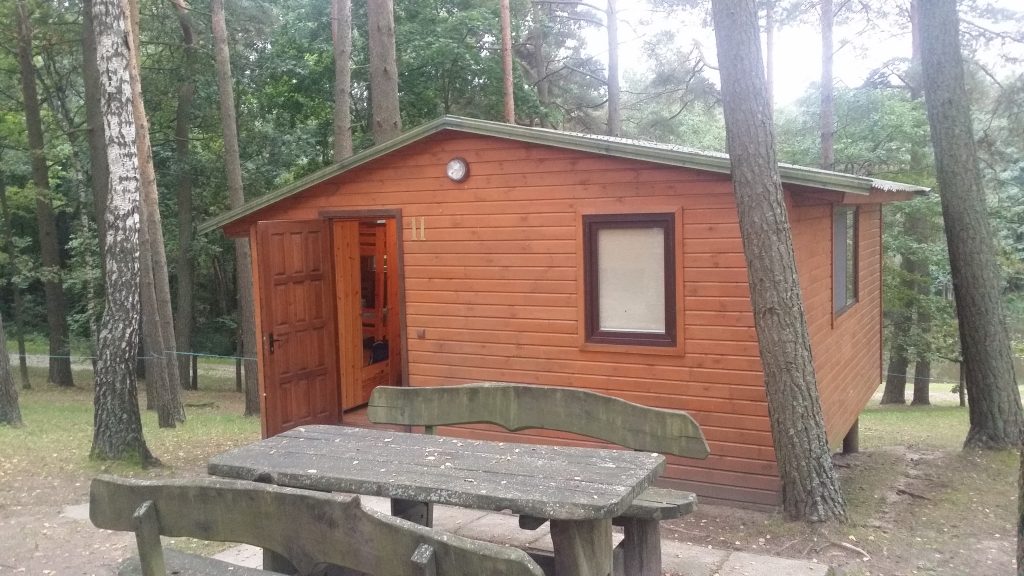
I was assigned the upper mattress of the only bunk bed in cabin. Not a problem.

The Site
As I now know the regional Baltic Vipassana meditation centre will be developed somewhere in Trakai region. The land plot was already acquired by organisation. However from 2004, when first course was conducted in Lithuania it was happening for the most part in Zamokėliai village, “Bebrusai” rented residence, near the scenic Bebrusai lake, Molėtai region, Lithuania.
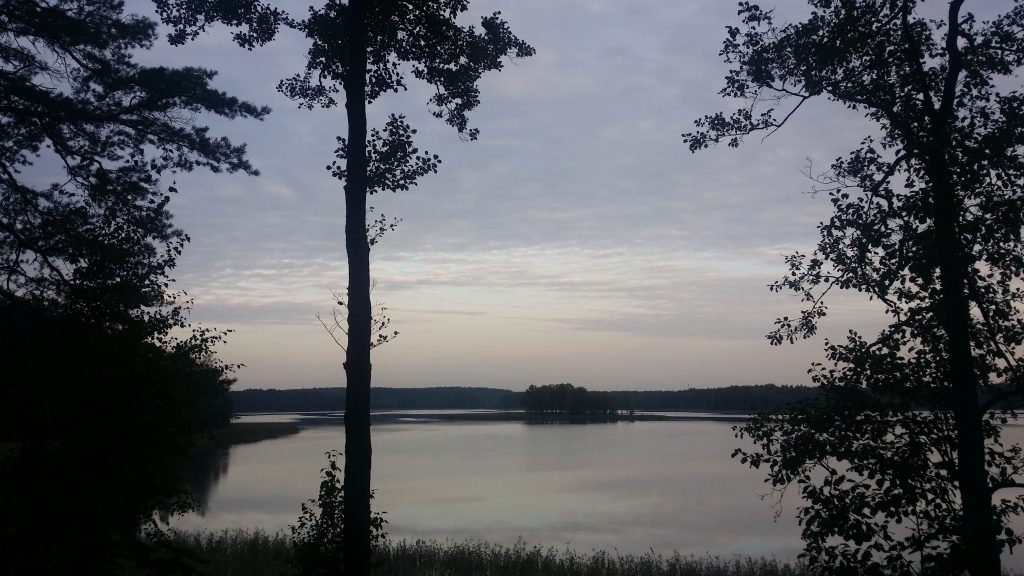
Men got lucky and got the side of the lake view, which was an absolute eye catcher through the whole course. Territory was bounded by nominal lines which marked separation of sexes and course boundaries.
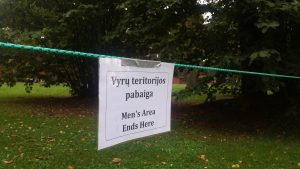
After settling at the residence I got out, found a bench with a nice view and just relaxed. The sense of time disappearing came. Looking at the lake my mind was along the lines of:
I will be here for the rest of 11 days: no rush, no stress.
Gaps between thoughts opened up, deep relaxation. Lying on a bench, sitting, then slow walk around the territory. Until the promised supper I have met two of my roommates we shook hands and exchanged names. I knew nothing about the last guy in our cabin for the rest of the course.
Those two hours were only hard to wait approaching 5 PM due to hunger building up. We got a very delicious vegetarian soup and after a mild supper introduction started.
Course begins
After a general orientation information concerning the site, residences, introduction of managers, reminder of main course rules etc. was done we all brought our “gear” to meditation hall. Each was assigned location and exact mattress of around 100 x 80 cm and that place was for the rest of the course. I got a place near the side wall, 2 meters from the window – I considered this a fortune.
Actual course teachers were from Canada – couple of very bright and mid-age yogis, simple and warm people. The whole course was conducted in English and Lithuanian languages. During the evening long lectures, those that preferred English were going to a dining hall. All other recordings and whatever Canadian teacher said was immediately translated/narrated to Lithuanian in common – meditation hall. I sticked with Lithuanian version, because narrator’s voice was pleasant, calm and more fast.
We, following the recording of master teacher S. N. Goenka, asked to teach us Anapanasati meditation in Pali language and undertook noble silence. After our first attempts at meditation, at around 9 PM were off to rest. The course started.
Vipassana daily course schedule
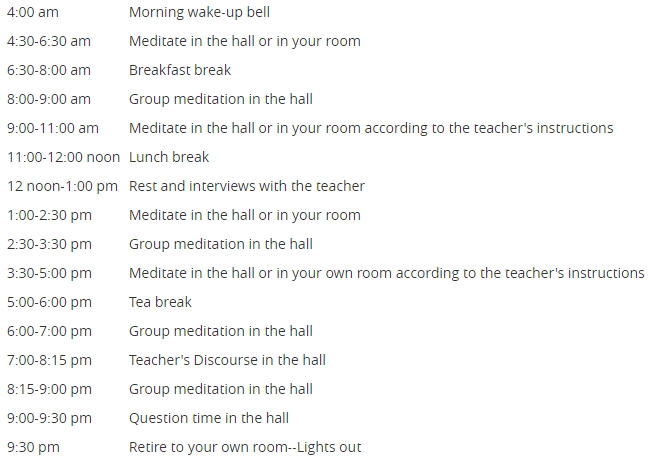 This is no joke. 10-11 hours a day of meditation. Two meals, both in the course of 5 hours in a day. There were slight modifications in day 4, when we learned the technique of Vipassana meditation and day 10, when the noble silence ended and we were learning Metta meditation.
This is no joke. 10-11 hours a day of meditation. Two meals, both in the course of 5 hours in a day. There were slight modifications in day 4, when we learned the technique of Vipassana meditation and day 10, when the noble silence ended and we were learning Metta meditation.
Daily agenda and schedule was posted in segregated dining halls for the whole course. So whenever you forgot what’s next you could go there and check.
Mornings
During the orientation meeting on Day 0 a volunteer from old students was assigned a task to wake up half an hour earlier and walk around the campus hitting a gong/bell.
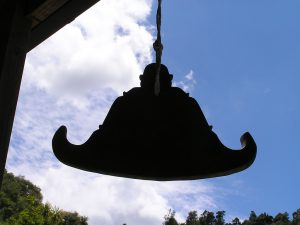
Missing the morning gong sound was probably impossible. It is surprisingly loud when hit hard. And the guy who used to walk through the cabins with this gong sure put an effort in hitting that thing.
The last guy in our cabin that I did not have a chance to shake hand on day 0 was the room’s starter as he jumped out of bed on the first sounds of bell approaching. I went to shower second or third. And that was the room’s morning routine. Common understanding and respect without any words.
First meditation sittings

I was used to meditate with back supported. And up to the last days the sitting in the meditation hall with my poor equipment of little pillow and plaid were uncomfortable to say the least.
I changed meditation positions each 15-20 minutes, because the pain was rapidly building up in all positions that I have tested trying to keep it very silent, not to disturb my peers.
The windows are dimmed, no incense, no candles, little light, little sound. You and your body-mind, go!
Anapanasati Meditation Technique
Up to the middle of fourth day we were developing our Samadhi – concentration of the mind through the practice of Anapanasati.
Essence of Anapanasati is to observe and feel the breathing. You should breathe through your nose. Theory and practice goes together throughout the course and I will cover the theory soon enough, but at this point I would like to point out, that breathing is the perhaps the only process in human body you can control consciously and that does good enough autonomously. This I have never realized before, that there are doors to subconscious right in front of our noses.
I have raised questions of observer effect during observation of breathing. We should not have controlled, put conscious effort to breathing. Simply observe, however during the practice I noticed there’s a very thin line between observing and putting an intention to make a breath more structured, even, deeper etc. I did my best not to interact with natural flow of respiration anyway.
Monkey Mind
Mind escapes and wanders off very fast. Goenka (when I mention him, I mean his voice in the recordings in meditation hall) over many times reminded that this is what the mind is used to do. It’s the mind’s nature to wander. Don’t beat your self over or feel bad about the fact you are unable to concentrate (even it may seem like an easy job to focus your attention on respiration only). Accept the reality: my mind has wandered again and work again. Rinse and repeat.
In the first day my mind was away in first minutes and off for 5-15 minutes I would estimate. I knew my over-thinking mind was hard to handle, but extensive time of meditation showed it was more severe than I previously thought. In the Now Mind is Irrelevant, so it is Mind’s nature to protect and manifest itself in past and future (memories and plans). I think this is along the lines of Eckhart Tolle.
My thoughts escaped the Now to portfolio management, memories, sex, relationships, marketing strategy for this blog, learning plans and even writing this goddamn article in my mind! C’mon man, really? The breath, again. At least I was happy I was working on it at the moment.
Over the course of three hard days practice I managed to drift less and less and for shorter periods of time. The area of surveying also decreased: from the top of the lip to the bottom of nostrils. By the second day we were supposed to observe sensations in this area. Any feeling that arises in this small area between the nostrils and upper lip: itching, vibrating, pulsing, tickling, numbness, temperature, air passing, pressure, tension, contraction, etc. But only to observe – without any action or reaction.
Meals

All our meals were vegetarian, clean and healthy. I especially liked it, as I know we are what we eat and what we do (what we think as well). Easy to digest, healthy meals were supposed to help us walk the path (dhamma) to liberation.
Breakfast had cereal, muesli, greek yogurt or milk at somedays (I think, did not try), jams, bread, seeds and apples. On lunch I was surprised with all sorts of delicious healthy goodies. Everything was simple, yet enjoyable.
I don’t know about the others but preparing and enjoying healthy meals is a pleasant psychological experience of it’s own, not only meeting demands of stomach. On evening tea break new students could take 2 fruits. A pot of herbal tea and tie-bags with hot water were available during these three times, and water – at all times in the dining hall.
It’s notable that you got the main meals of 24 hour day in the span of 5-6 hours. Which leaves enough room for starvation and craving for food to kick in.
Enjoying the Simple Things
There is nothing to do on the free time. Nothing. You piss, wash hands, rest your back in the bed for a while, maybe take a nap if you are under-slept and if flatmates aren’t too loud, maybe you rest on the grass outside and watch the blue sky and treetops swinging… The criteria for enjoyment drops so surprisingly low…
I have smiled to myself and felt extreme fulfillment while:
- trying to catch early autumn leaves falling from tall birches;
- examining the architecture of nature in the micro area of dried moss on the tree;
- noticing 3mm height sprout with three tiny leaves fighting it’s way through asphalt;
- stargazing, watching moon change from day to day, whenever possible;
- every bite of banana (few among many apples) at tea break;
- great, calm weather and sun rays on the face;
- examining the nearby island: in fog, rain, sunrise, morning, day, evening, sunset, with mirror reflections, with wind, boats passing by…

Bebrusai Lake, Lithuania. Photo by RiMi
Similar view accompanied most of the evenings when walking towards the bed from the evening discourse and evening meditation.
Evening Discourses
Those were just great. We could sit with a back rested at the wall and listen for Goenka’s teachings of technique, philosophy of Buddhism with illustrative and meaningful stories from lives of Gautama Buddha himself and S. N. Goenka. This was like Vipassana course equivalent of watching a movie. During the first lecture I perhaps misheard:
from day … (?) when you won’t be able to change your posture, but don’t worry about that for now
I was like: wha..? But I will leave this for now as well.
Essence of Vipassana and Buddhism
The axis of whole teaching is putting in practice Anicca – the Law of Impermanence. Put simply: the tree you look at now, and the tree you looked at few seconds ago is a different tree. The wind just twisted a leaves in another unique combination, it’s branches are infinitesimally longer (nano-growth), its capillary system is filled with an unique set of mineral concentration from the ground water – you get the picture. Our perception is very limited. Our nature simplifies and ignores most of the stuff to make our lives easier to handle. This is also what Jordan B. Peterson emphasizes in his Maps of Meaning Lectures. But only because it’s ignored, does not mean it’s not there.
As we go about our life, different stimuli crop up – some pleasant, some not so much. And from psychoanalysis we know we have conscious and unconscious to deal with the world coming our way. It’s not hard to suspect, that some experiences avoid the conscious processing and set camp at subconscious. Gotama Buddha tried all the known meditation techniques at the time to elevate misery, but all of them only diverted attention elsewhere or worked temporarily. What he noticed was that our experience with material world results in feelings (sensations) in our body.
The Buddha said, “Sabbe Dhamma vedana samosarana“, anything that arises in the mind starts flowing as a sensation on the body.
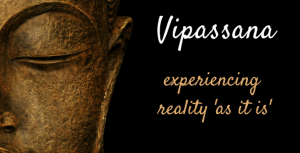 We crave the pleasant sensations and detest the unpleasant ones. As we react to sensations, we create sankharas. Action is preceded by word. Word is preceded by thought. Thought is preceded by unconscious reaction to sensation – sankhara. That is what a Mind does.
We crave the pleasant sensations and detest the unpleasant ones. As we react to sensations, we create sankharas. Action is preceded by word. Word is preceded by thought. Thought is preceded by unconscious reaction to sensation – sankhara. That is what a Mind does.
In practice of Vipassana, one attempts to observe and understand the nature sensations (your factual reality) as they really are, without any reaction. The fundamental property of any physical sensation is anicca – to appear and disappear over the time. For this task a highly concentrated mind is required (Samahdi).
The aim of observation is to stop generating new reactions (sankharas). And when we stop creating new sankharas the old stock of sankharas (traumas and cravings) flow to the surface. If we keep observing – ultimately we get liberated and enlightened. The real life applicability example is in Vipassana technique paragraph.
My take on Enlightenment
The word “Light” carries two meanings: an opposition of darkness and something of low weight. Enlightenment for me isn’t so much of a realization of certain divide truth, but the solution of subconscious past. Stop that dragging of your unpleasant memories and traumas, both conscious and unconscious. This unavoidably requires awareness and you are there – you are enlightened.
Anyway, you can read more on the theory of a teaching from S. N. Goenka himself. That’s an excellent read. A deep dive into the practice reaches the levels of:
Observing, observing you will reach the stage when you experience that the entire physical structure is nothing but subatomic particles: throughout the body, nothing but kalapas (subatomic particles). And even these tiniest subatomic particles are not solid. They are mere vibration, just wavelets. The Buddha’s words become clear by experience: Sabbo pajjalito loko, sabbo loko pakampito. The entire universe is nothing but combustion and vibration.
Motivation
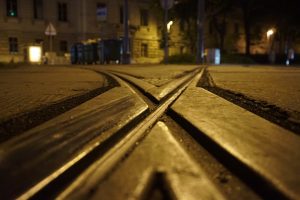
This base of theory was delivered in first two evenings, if I remember correctly. I felt a positive burst of enthusiasm and willingness to work even harder to maximize the benefits of remainder days. So on the Day 3 I pushed myself and meditated the whole day’s schedule of meditations in the hall. On the evening I was like:
Damn, I meditated a lot today
That was somewhere between 10-11 hours of quiet meditation sitting in one day. On day 4 I paid my dues. Emotional and physical fatigue did not help with learning Vipassana’s core technique.
Vipassana Meditation Technique
From afternoon of day 4 we got instructions on core Vipassana meditation technique. Which is starting from the top of the head, to the tips of the toes to take each individual body part and observe any present bodily sensations. As mentioned above, no matter what the sensation is – our purpose is to observe and keep equanimity – the balanced and focused mind. If on certain body part you feel a pleasant sensation – don’t form a craving sankhara. If you feel unpleasant sensation – don’t form an aversion sankhara. And if you come across a blind area on a body (without any sensations) – focus your attention on the area for several minutes. If nothing shows up – move on to the next part.
From day 4 to day 10 technique gradually evolves: at first moving attention to each individual part and finally “scanning” whole body (outside surface as well as inside organs, muscles and bones) through a free flow of attention. At which point whole body is an entity of vibrations without any significant sensation of substance to it.
While observing sensations it’s important to observe their common characteristic of anicca – sensations appear and disappear over time. When practice of non-reactivity overrides the default wiring of one’s brain, an experienced meditator of Vipassana can accept the reality of life without emotional imbalances and make more calculated decisions in life.
Vipassana meditation improves the third pillar of the teaching – Paññā – Wisdom of Insight.
Adhitthana (The Sitting of Strong Determination)
Vipassana can not be practiced properly if you keep changing and disturbing the attention, so from afternoon of day 4, each day we had three Sittings of Strong Determination or so called Adhitthana sittings. During these it is encouraged not to change your posture for whole 1 hour. There also was a warning in the dinning hall announcement board about how Adhitthana sitting is not about torturing yourself, but about the development of the Mind. Meaning if you can’t handle the pain, just quietly change your position, just do it as few times as possible.
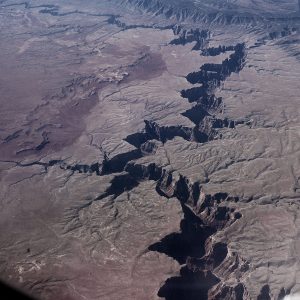 Well, I did not see that warning at first and with small back straightening adjustments made it through a whole eternal hour. First 10-15 minutes passed rather quietly (in my mind), I did my best to move attention from one body part to another and observe any surface sensations as required by Vipassana technique with mild occasional anxiety of how am I going to go through this when pain kicks in.
Well, I did not see that warning at first and with small back straightening adjustments made it through a whole eternal hour. First 10-15 minutes passed rather quietly (in my mind), I did my best to move attention from one body part to another and observe any surface sensations as required by Vipassana technique with mild occasional anxiety of how am I going to go through this when pain kicks in.
Unhandled Pain
Throughout previous days I have tested and rotated 3-4 sitting positions. Sitting on my humble cushions with knees facing up and my feet fully on the mattress with arms hugging my knees and a straight back seemed most bearable position.
Tension and muscle fatigue announced itself loud and clear at perhaps 20 minutes into the hour. That’s where my first real Adhitthana ended. “You are in pain! Solve it!” That’s a DNA warning about the danger to life in primal sense. Actually I can not fully describe what it’s like to be in the pain, multiply it by thinking about it and doing nothing to remove it. Eyes in REM mode (rapid eye movement), Eye lids – forcefully closed, face – all tense, arms – tense, muscles of arms, back and bottom – pulsing, screaming, overriding ANY conscious thought – NOTHING IS RELEVANT. THE ONLY AIM: REMOVE THE PAIN !!!
After recording of Goenka chants started I was confused, physically and mentally exhausted. I was fighting, that’s what I was conditioned to do my whole life. And now the fight is over. I got out of the hall, did few stretches and on the way to cabin broke down. I could not handle the tears. I only remember comparable amount of physical pain once in my life before. I had some thinking to do…
Memorable Day 5
As expected evening discourse of day 4 addressed the reality of “gross sensations”. I knew it was my fault I pushed myself unknowingly too hard and paid the price, I was humble and accepted it. Had another night of vivid dreams and started day 5. Still felt remainders of day 4 on my back while walking though.
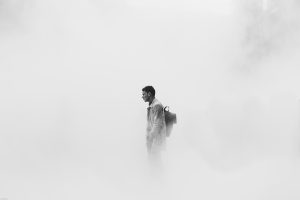 I tried to keep positions as long as I could handle the semi-focused mind on the task at hand – practicing Vipassana – feeling and observing sensations, but in days 5-7 I still changed my position 2-3 times in one hour sitting. I had doubts and started questioning the fundamentals.
I tried to keep positions as long as I could handle the semi-focused mind on the task at hand – practicing Vipassana – feeling and observing sensations, but in days 5-7 I still changed my position 2-3 times in one hour sitting. I had doubts and started questioning the fundamentals.
First Question to Teacher
So far I had questions, but they seemed too shallow to waste the air and energy on the teacher’s end. After the evening discourse the question remained and before sitting for last day’s meditation I humbly approached our Canadian teacher and asked if he doesn’t mind sparing 2 minutes. He nodded and I asked:
So far we have been ignoring quite a lot of stuff. I get the purpose of technique even though I, myself still suck at it, but along the lines of technique, we are also learning to ignore the pleasant sensations. If we keep equanimous to both sides of the scales, will the subsequent discourses cover the motivation in life if we ignore the positive feelings (which in my mind are directly linked to motivation to do good in life)? I mean, if we ignore the positive – what’s the point to do anything? If this will be covered – I can wait and don’t answer me right now.
I regret the second part. He admitted it was rather negative so far. The sensations as well as discourse material mainly focusing on social conditioning ultimately causing suffering, but assured my answers are waiting in day 6-7 lectures.
Indeed the answer came, but right now it seems intangible. The ultimate goal of enlightened person is to serve others. Perhaps my ego still can not take it as face value.
First Natural Psychedelic Experience

That evening, as most of the evenings, sky was clear and before heading to bed I stopped to rest and observe the beauty of landscape and color palette on sky as well as perfect reflection on the lake. Here’s that borrowed picture from above again, which is rather similar what I was looking at the time.
I just stood leaning against a pine and admired the beauty of nature when suddenly I noticed the sky was glowing. I was freaking shocked. I did not take any substances here, what the hell? The tones of orange, blue, gray were shifting as I looked at them. Colors were changing at considerably slow pace with transition time of around 1-2 seconds. Few moments later I noticed I feel some inexperienced shifts in my eye balls, so I presumed this whole “trip” was caused purely by physiological reasons – high blood pressure in eyes as well as whole body I suppose, due to amount of pain I went through that day. For the first time in my life I experienced natural, however not sustainable psychedelic effects. Thanks Vipassana.
Agonizing days 6 & 7
Adhitthana sittings in the hall
Explanatory note on the sitting of strong determination found in dinning hall’s bulletin board stated clearly that sustaining pain wasn’t the point of Vipassana technique at all. Equanimity, awareness, the experience of anicca (impermanence) was. And I failed miserably.
Technique requires to focus attention on blind spots (body parts that do not at first glance have any sensations) for 1-2 minutes. If no sensations are felt during this time – no worries, no craving – moving on to the next body part. I could do that in first 5-10 minutes if I got my mind calm. Then eventually pain shows up and difficulty of this game increases beyond what I could handle. Negative feedback loops that look like this take place.
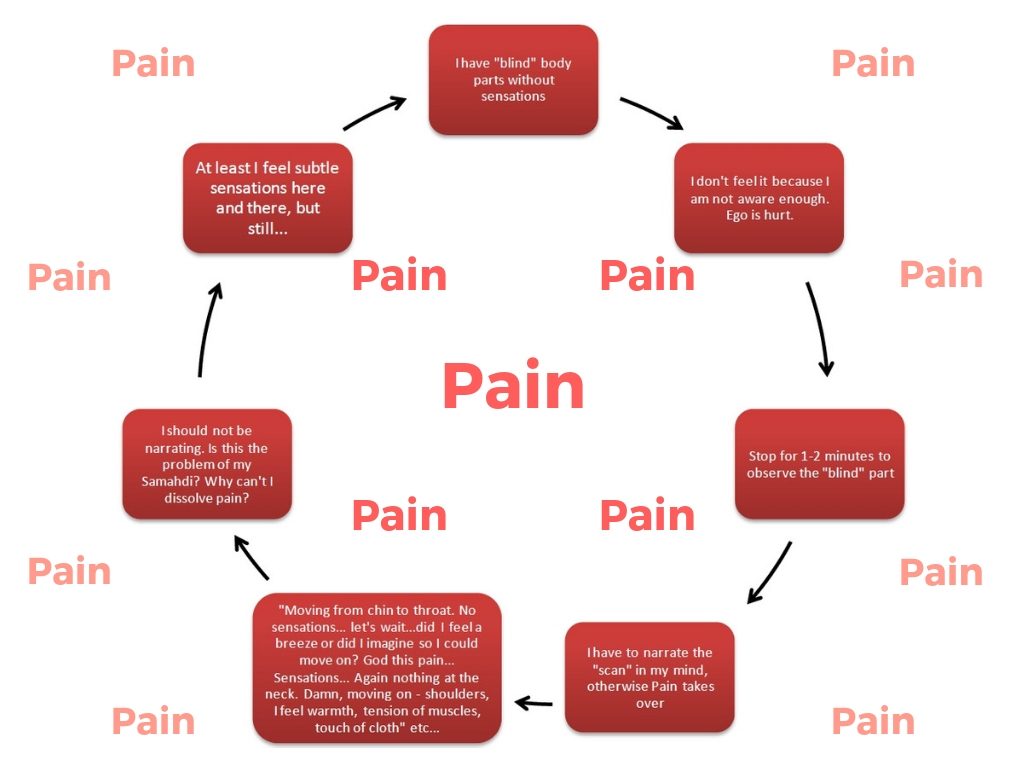
Several times I lay on my belly outside watching that island asking my self the same question: what the heck? How do I solve and proceed with technique?
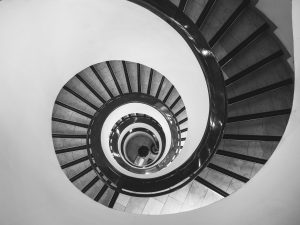 I am harsh at self criticism. I was beating myself a lot during these days and this negative loop just kept reinforcing itself. My vibe turned around and got negative, even evil perhaps. It might have been ego defense. I started judging my peers, complaining, blaming myself, Goenka, stupid methods and for the first time started missing plain material things at home: my music, milk chocolate, jogging, sex and a supper. I even stopped admiring the nature, that I had been so attentive previous days. This was a downward spiral, I could not think of ways of getting out. I decided this was too much for me to handle.
I am harsh at self criticism. I was beating myself a lot during these days and this negative loop just kept reinforcing itself. My vibe turned around and got negative, even evil perhaps. It might have been ego defense. I started judging my peers, complaining, blaming myself, Goenka, stupid methods and for the first time started missing plain material things at home: my music, milk chocolate, jogging, sex and a supper. I even stopped admiring the nature, that I had been so attentive previous days. This was a downward spiral, I could not think of ways of getting out. I decided this was too much for me to handle.
Second Question to Teacher
After the evening discourse I again approached teacher.
Whenever in life I encounter difficulties I take my time but think my way through it. Here it’s evident thinking is the problem and not the way to solve things…
He wanted a clear picture: “Are you an engineer?” I smiled. He has been through a lot of students. I confirmed and proceeded with my misfortunes of recent days.
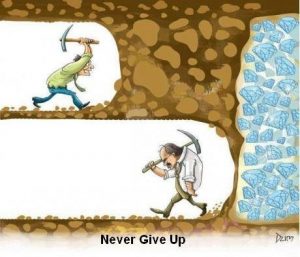
I change positions 2-3 times during an Adhitthana sittings. I feel subtle sensations here and there, but mostly gross sensations (pain). I have plenty of “blind spots” without any sensations. It’s really hard to focus, so I narrate, which I should not do in the first place. I feel as if I am regressing and failing. What would you advise I do?
Simple and elegant. I still can’t believe how well it cleared the mental clouds. “This is not a failure as long as you put effort“.
How could I forgot that? Perhaps we all have limit of tolerance and eventually we all give up? This reminds me of that old cartoon. These things teach you stuff.
Meditate 24 hours a Day
Evening discourse of Day 7 pointed out, that we have only two days of serious work and introduced the extension of technique outside of residences and meditation hall. We shall observe sensations at all the times (except when you are sleeping of course) during walking (e.g. how pants cloth is touching the moving legs, toes inside a shoe), eating (how food, spoon feels on lips, tongue, gums) etc. Even if you can’t sleep – don’t waste time, and concentrate attention to your body.
The aim is to develop panna (wisdom of awareness) and spot as many bodily sensations at any time as possible. I noticed I started walking even slower. To my surprise this “off-court” practice increased progress during Adhitthana sittings.
Day ended on a positive note. Teacher encouraged me, evening discourse was again on point explaining further the meaning of student’s struggles and philosophy of life I dare to say.
A Peek at Enlightenment
It was the first night with intense rain. As I mentioned before I slept on top of the bunk bed and I was around 80 cm distance from rain drops splashing at the rooftop. During all the nights actually it was hard to fall asleep. I kept turning and thinking about the Vipassana experience, discourse material, memories, plans, sex, ideas. This evening was no different. I practiced for some time and finally let my mind to rest – meaning I let it wander, because I could not sleep yet. I learned pretty soon – awareness tremendously exhausts mental power. It takes substantial effort to shut that mind off. Because for most of the day time that wandering was not welcome, my mind got its daily dose of thinking before the sleep I guess. After perhaps an hour I finally got asleep but the pinnacle of the story happened later.

During the night I woke up lying on my back (I never sleep on my back..?!) with some feeling I have really hard time putting into words. To begin with I was only semiconscious. It wasn’t the dream state, nor was I awake. I felt as if my whole body was made out of ~1 cm diameter particles that were somehow electrified/intensified by two sources:
- my attention;
- loud rain less than a meter above me.
This resonance resulted in an unspeakable feeling of Bliss. But seconds after I realized – anicca – it will pass and I focused on observing instead of amazement or attachment to this feeling. I meditated during a night. However after some time (minutes probably) a thought passed through:
Tomorrow is going to be another hard day of work, I have to get some rest
I passed on this once in a lifetime experience, turned on my side and returned to sleep seconds later.
Dreams
This was a mistake. I knew it before the morning gong already. I have a strong conscience. Whenever I am not pushing myself conscience shines through my personality to the conscious surface and tells me: you should be doing useful, meaningful things right now instead of this.
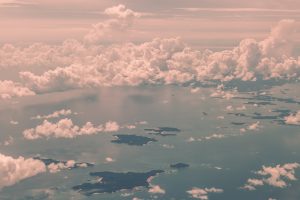 That time when I gave up an opportunity of a lifetime to examine myself as never before for a comforting sleep even though I told myself I am here at Vipassana to work resulted in two intense nightmares in a row. This was a clear subconscious message – I betrayed myself.
That time when I gave up an opportunity of a lifetime to examine myself as never before for a comforting sleep even though I told myself I am here at Vipassana to work resulted in two intense nightmares in a row. This was a clear subconscious message – I betrayed myself.
I think, dreams are encoded messages from subconscious and if you try hard enough, over time you learn to decode some of the messages. Meaning? Sometimes these dream messages possess remarkable lessons applicable in daily life.
During the nights at Vipassana I have dreamed extensively. Some of the dreams were just a clutter after which you feel as if you watched the movie by Nolan or David Lynch, some carried messages and symbols that I kept with me and delivered to the people related. But I would like to share the second part of one particular dream with you.
That One Dream with Will Smith
I don’t know about you, but in my mental landscape Will Smith is a success icon. From an early youtube days, when there were not so much motivational videos one video (Will Smith’s key to life: running and reading) that my friend showed me stood with me to this day.
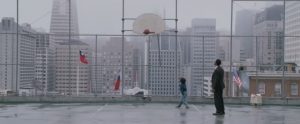
On day 5 or 6 I dreamed of basketball court with 4 people. Will Smith, Jaden Smith, someone I knew and me. The scene from Pursuit Of Happyness sure had an impact creating an scene in a dream, however in the movie the colors were dark, emphasizing the struggles of characters. In my dream the scene was of positive mood and Jaden was a teen – maybe 14-15 years old.
Anyway, at first I watched Will and Jaden play basketball one on one. The twist was that they were playing with invisible ball. Meaning the pushed their neuroplasticity to the max while perhaps being unable to afford a ball (again deviation from movie plot, but bringing an element of scarcity vs happiness). The fact was that watching them it was clear – no matter if there was a ball or not, they would be having the same amount of fun.
Soon me and my pal (unidentifiable) joined the game and we started playing the imaginary ball 2 vs 2. After some time (this really taps onto my style of humor) I said to Will:
-Listen, I have a ball at my house (which from the sense of it was a minute walk), should I grab and bring it (so we could play the real ball)?
Will Smith looked at me for like 5 seconds with an unspeakable surprise on his face and then said with a wide smile on his face:
-Nah man, we good.
And we proceeded to play basketball with non-existing ball. For the first time I woke up from my own laugh.
Salvation Lurks in Threesomes
My bucket list includes a threesome with two girls. I don’t know how and when it got there but I know it’s there.
Vipassana technique tries to eradicate any aversion of unpleasant feelings and cravings of pleasant ones. So far in my practice I have felt some subtle flow of tingling sensations on my arms that was largely overridden by pain. So naturally my focus was on learning to ignore aversion towards pain and tension.
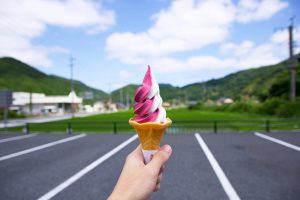 In Day 8 my attention got away to sex again and I started plotting potential scenarios of joining two of my girl friends in a memorable endeavor. I got an erection or a “subtle” sensation in Vipassana terms. I soon applied Buddhism – “anicca – it will pass – it is temporary”. More importantly – I realized it was a craving that I needed to let go of. Right there I had a practical and very clear chance to work with an opposite – craving side of human nature, that seemed so distant before. This was a gateway to consciously admit to myself about the other cravings I have: chocolate, my beloved playlist, my old and undying laptop etc.
In Day 8 my attention got away to sex again and I started plotting potential scenarios of joining two of my girl friends in a memorable endeavor. I got an erection or a “subtle” sensation in Vipassana terms. I soon applied Buddhism – “anicca – it will pass – it is temporary”. More importantly – I realized it was a craving that I needed to let go of. Right there I had a practical and very clear chance to work with an opposite – craving side of human nature, that seemed so distant before. This was a gateway to consciously admit to myself about the other cravings I have: chocolate, my beloved playlist, my old and undying laptop etc.
That was the first Adhitthana meditation sitting I was able to sustain and focus quite attentively after all these deviations since day 4.
Progress
Diluting pain
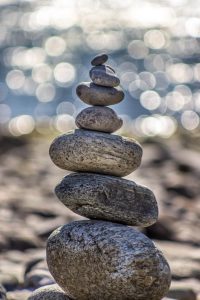 Keeping attention for longer periods at the areas of intense pain accompanied by conscious deeper breaths (cheating I suppose) proved itself to be an effective way in reducing pain. This was profound. After 8-9 days of intense work you arrive at something relatively tangible – melting pain. Anicca. Panna. The power of Vipassana. It works, it works goddammit! Few minutes later I accept new reality – I am able to have semi control of pain now. Return of equanimity and further work.
Keeping attention for longer periods at the areas of intense pain accompanied by conscious deeper breaths (cheating I suppose) proved itself to be an effective way in reducing pain. This was profound. After 8-9 days of intense work you arrive at something relatively tangible – melting pain. Anicca. Panna. The power of Vipassana. It works, it works goddammit! Few minutes later I accept new reality – I am able to have semi control of pain now. Return of equanimity and further work.
Final Results of Technique
Somehow my internal image of success at Vipassana is tied to ability to not change position at Adhitthana. Funny. In reality, on the last day I have tried only once to move my attention in a free flow through my interior, even though I still had some blind body spots. Nevertheless I have managed to dilute pain without occasional conscious breaths, it just dissipated and I felt substantial increase of subtle little sensations on my chest, arms and most of legs.
Last (third) question to teacher
Sometimes in meditation sessions, out of pure void some past memories would visit my consciousness. Some of them were events where I have wronged someone or held hidden grudge. My curiosity grew and finally I had to make it clear. I asked my last question:
Teaching tells, if we keep observing sensations and remain equanimous old sankharas (cravings and aversions) would come to surface. Do these old sankharas come as conscious memories or do we work with them in subconscious level, meaning we never know what we are dealing with and only are able to see the result of “enlightenment”?
In short, the latter was true. Sankharas never show up in conscious form. They are too subtle for that, so your best bet is to continuously grind the technique until you are a set of ever-changing vibrations.
Course Ending
Noble Chatter
Goenka’s recording explained, that being with your self for all these days and returning to outside world is somewhat shocking to some. To soften the transition and reintroduction to society on day 10, after the lunch, Noble silence ends and “noble chatter” starts. Sexes segregation ended temporarily at the dining area. A lot of posters, books about Vipassana organization appeared. But the most exciting part was sharing the experiences. Although majority of men were 25-35, with extreme background diversity, all the people had a common pursuit to find harmony within them and better know themselves.
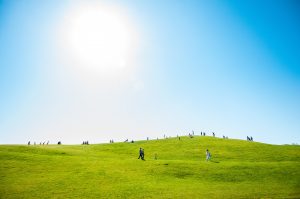
Stories varied a lot. The common ground was an evident physic of the sitting. Some people were going through their second, third … Vipassana course. They all shared the same message: work done here multiple times yields multiple results.
A few had different expectations, but proceeded till the end while I assume around 10% of participants ended the course prematurely.
Another common characteristic I would attribute to students of Vipassana is depth. I felt refreshed talking on psychology, dreams, self-discovery and development. Finally, it was really fun to shake a hand and to know a name of my last roommate that all these days was just a “shadow”.
Metta Meditation
On the afternoon of day 10 we have learnt Metta Meditation. That is the ending part of Adhitthana. Basically it is an energetic message to the whole world encrypted with compassion, happiness. In short:
May all human being be happy
Only once during the following sessions I was able to honestly send these wishes.
Solving Life at Vipassana
Past
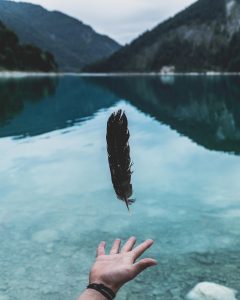 I had time. My mind also created time when it actually had other things to attend to. Memories of different sorts came. I thought I had solved most of the haunting issues (or traumas you might call it), but Vipassana surfaced quite a few situations I could not let go till then.
I had time. My mind also created time when it actually had other things to attend to. Memories of different sorts came. I thought I had solved most of the haunting issues (or traumas you might call it), but Vipassana surfaced quite a few situations I could not let go till then.
The thing about letting go is that you first have to become conscious of the reasoning of an event, otherwise you might fall in the same pit again. I suspect I did not have suffice mental tools to learn the lessons at the time and memories stuck.
I carried pointless weight of anger towards few people, which was absurd. Clear head was especially helpful to tackle really difficult ones. I reframed, bent few memories to the best interest of the future me, whenever someone else was guilty. Most importantly I forgave.
Future
After the course ended I also made effort to correct some of my past mistakes with few of my relatives and friends that are still around me. This decision was brought forward by both subconscious (dreams) and conscious (thinking) experiences in Vipassana. I have a strong intuition the words that I am prepared for each individual will strengthen and benefit the common friendship.
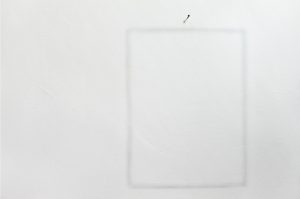 When mind clears itself out of evident misery, it tries to escape into the future. Occasionally throughout the course I wanted to do stuff: Work on this blog, learn new things, skills, read books, meet my relatives, friends etc.
When mind clears itself out of evident misery, it tries to escape into the future. Occasionally throughout the course I wanted to do stuff: Work on this blog, learn new things, skills, read books, meet my relatives, friends etc.
I will test myself in the field of programming in upcoming years. During these silent ten days I came up with two applications to develop. One of which could easily turn out to be a business. I was really excited about these ideas.
Is Vipassana a sect?
Only one of my friends had heard of Vipassana retreat before. When I told people where I was going and that I’m about to sit for 10 hours a day meditating for more than a week, a word “sect” was occasionally popping up.
Which begs the question… What is a sect? My poor preconceived notion is that a sect sucks out the money in the long run and converts its members into mindless zombies repeating some ideological BS.
No, Vipassana is nothing like that. You work with your own senses, with your own reality, “as it is”. And the money? Organization is alive entirely on donations. You contribute your work, gather results and you can, if you wish express your reciprocity with donation. That’s a great and honest model.
Conclusion
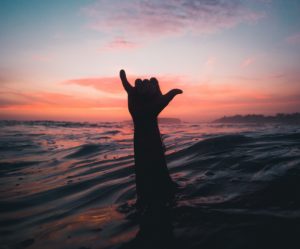 Nothing changed fundamentally, from the first sight. However I know for a fact I am more chill, equanimous, if you will. Eckhart Tolle, Alan Watts, Jiddu Krishnamurti laid the theoretical, eastern philosophy groundwork prior to Vipassana, so I was familiar with Buddhism ideas. But looking at the water and swimming in it… The practical aspect of Vipassana can not be understated.
Nothing changed fundamentally, from the first sight. However I know for a fact I am more chill, equanimous, if you will. Eckhart Tolle, Alan Watts, Jiddu Krishnamurti laid the theoretical, eastern philosophy groundwork prior to Vipassana, so I was familiar with Buddhism ideas. But looking at the water and swimming in it… The practical aspect of Vipassana can not be understated.
I would say, that the most beneficial thing I brought back home from retreat was a practical sense of Anicca. I’m telling you: transcending your own pain – fundamental and undeniable reality – is really something to experience.
No man steps in the same river twice. Heraclitus
After all, nor the man, nor the river is ever the same. To feel it is to be aware.
This was an absolutely unique experience. Waking up at 4 AM, exploring the inner self, having all these internal conflicts, dreams and thoughts for 10 days in a row made Vipassana a truly unforgettable journey.
In case you would like to enter 10-day course yourself, you can find Vipassana course near you. Stop looking at the water. Swim. You might be surprised what’s on the other shore of You.

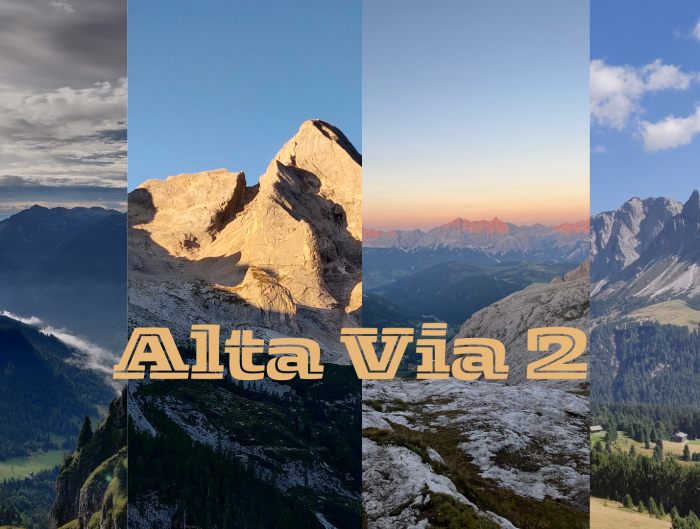
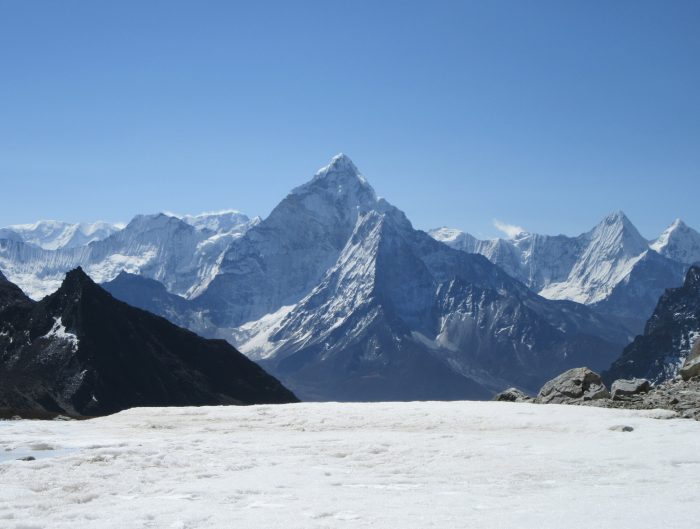

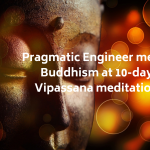
Comment
very good spiritual experience……Thanks